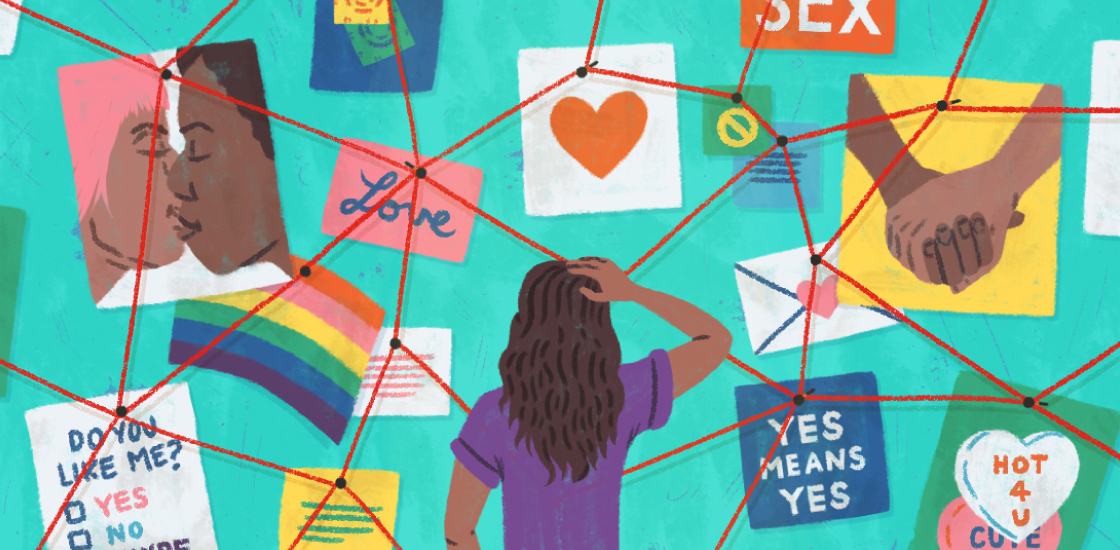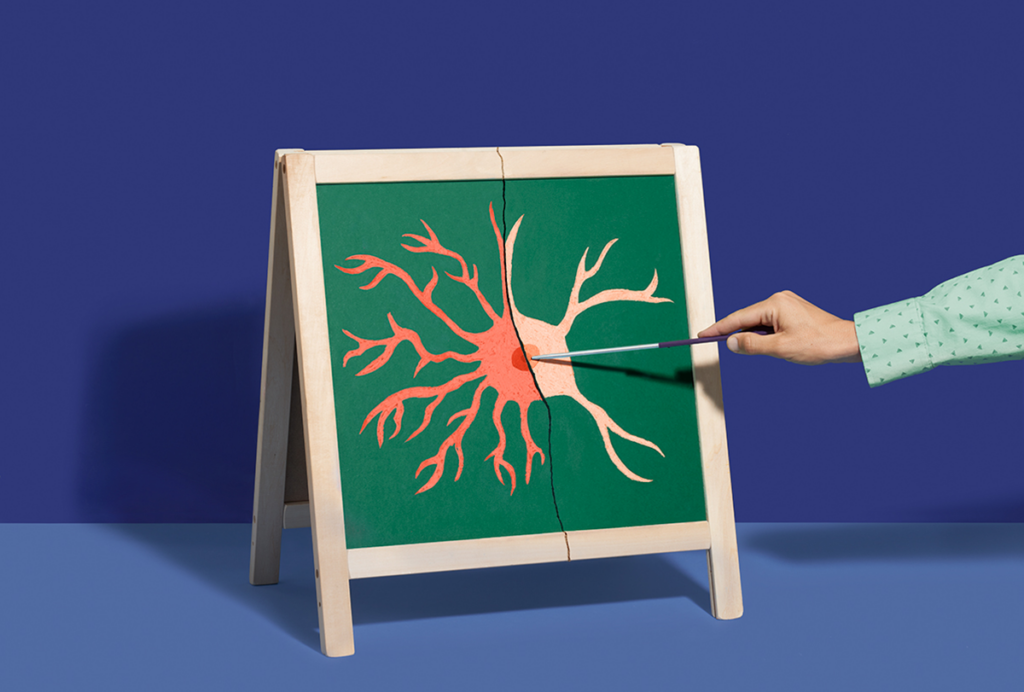Adolescents with autism need access to better sex education
Sex education in schools needs to be adapted for teens on the spectrum so they can approach relationships in a way that is safe, confident and healthy.

Intimacy is part of being human. There are well-documented benefits to positive relationships, from emotional security to good mental health1. Those who want relationships and can’t develop them face low self-esteem, depression, loneliness and isolation from the wider society2.
For adolescents, learning how to navigate sex and sexuality can be a minefield. How do you figure out the nuances of sexuality without experience? How do you approach a potential partner? And once you do, how do you communicate with him or her?
This path is especially fraught for adolescents with autism. For example, people with autism tend to report higher levels of sexual abuse and sexual exploitation than their neurotypical peers3. And yet there is a gap between what these young people need and what schools provide. According to a 2012 study, adolescents with autism know less about sex than do their peers and have less access to sex education4.
My team of researchers and I are documenting the experiences of adolescents with autism in relation to sex, sexuality and their schools’ sex education requirements. Our research suggests schools should provide sex education tailored to the needs of young people with autism.
These classes should include both the standard fare — from human development to safe sex — and additional instruction on topics such as how teens can express themselves to their potential partners and how to decode innuendos and other language used to describe sex. This education is vital to ensure that these adolescents can approach relationships in a way that is safe, confident and healthy.
Role play:
One common misconception about individuals with autism is that they prefer to be alone. My research suggests this simply isn’t true.
In an ongoing study, for example, my team conducted interviews related to sex and relationships with 40 adults with autism. Only three expressed ambivalence about relationships, mostly due to worries about coping with the needs of another person. Nearly half of the respondents had not yet had a relationship but expressed a strong desire for one.
Despite the desire to form relationships, this group expressed limited knowledge about how they would meet someone or show their interest. They found the idea of going out to a pub or club frightening, and socializing with groups of people provoked high anxiety. Some of them expressed a disdain for small talk, and others admitted they had little idea of how to engage in general conversation. They also found the use of dating apps unappealing and said they thought there was an inherent danger in meeting strangers.
Sex education could help these individuals feel confident in approaching others using role-play. For example, they could use techniques created by the late Augusto Boal, a Brazilian theater director who created plays in which audiences could participate.
In the context of sex education, an actor would play the part of the individual with autism and re-create one of that person’s real-life experiences, such as trying to talk to someone new in a bar. The individual with autism would then give the actor new directions — such as “What if I offer to buy her a drink?” — allowing the person with autism to try out many approaches, and witness potential consequences, in a safe environment.
Advice network:
Although instructors may help with some aspects of communication, it’s profoundly difficult to teach someone how to read the intentions and desires of others. Most teenagers rely on peers to work through some of these social complexities.
Teens get feedback from their peers on how to interact, meet new people and gauge the appropriateness of a relationship. Teens with autism struggle with close relationships, but sex education classes could facilitate that learning.
Our research suggests that they desire this guidance. For example, one individual in our study commented that schools should provide students with the “skills on how to find the right sort of partner.” To accomplish this goal, a school could provide an advice network, including regular group meetings in which young people with autism share and reflect upon their experiences. Social networking could extend this support.
For most adolescents, peers also fill in gaps such as helping to define sexual slang. In our study, another participant commented that hearing “dirty talk” from other students made her feel left behind. She was also unsure how to decode the words she heard, and said her school should explain what people might say in a sexual context and what these terms mean. With this context, she could decide to get involved or not.
Moderated discussions in a peer network could help address such slang and provide a safe space for students to ask questions about unfamiliar words.
Different sexualities:
To be effective, sex education in schools must take into consideration that some individuals with autism do not conform to traditional sex roles. When we interviewed 40 young adults with autism as part of an ongoing study, we found that 20 percent identified as gay or bisexual — more than is reported in national surveys of the general population. Gender fluidity may also be more common in individuals with autism: In a study we conducted this year (but is not yet published), we found an unusually high incidence of autism and autism traits in individuals who identify as transsexual or non-binary.
Despite these high numbers, some people with autism find it hard to accept different sexualities. As one male participant explained: “I have a rigid way of seeing the world, and this prevented me from accepting my sexuality. I sort of denied it to myself because I have very concrete black-and-white thinking and it didn’t quite fit in.” This early inability to accept his sexuality and identify as a gay man led to severe depression and admittance to a psychiatric ward.
In some ways, people with autism may even fall outside the ever-expanding range of sexual identities we see today, such as gay, straight, bisexual, pansexual and asexual. For example, one of our participants explained that her wonderful relationship with another girl with autism often involved sitting together for up to 10 hours reading in silence, or spending hours discussing Greek history.
Autism represents a profoundly different way of seeing and being in the world, and individuals with autism often expend great mental and physical effort just trying to appear ‘normal.’ Sex education in school needs to move away from suggesting that people with autism should fit in, and instead explore alternatives to traditional types of romantic relationships.
Awareness gaps:
Our work also suggests that individuals with autism aren’t always aware that they are sexual beings. This lack of self-awareness manifests both in the sexual cues they give off and how they may be perceived by others.
For example, two participants in our study reported behavior that could be perceived as stalking, such as continually following strangers, although they didn’t indicate that they understood how this could seem threatening. One described it this way: “I literally just saw him on the street. And then pretty much just stalked him.”
Not having a sense of one’s own sexuality can be harmful in other ways. For example, individuals with autism are three times as likely to experience sexual exploitation as their peers5. In our study, participants spoke of times when they had been extremely vulnerable and open to abuse. One woman reported that others had gotten her drunk and encouraged her to have sex with girls even though she doesn’t identify as gay. In the interview, she did not appear to be aware that these incidents could be perceived as someone taking advantage of her.
Sex educators need to understand these gaps in awareness to build confidence in young people with autism and to protect them from harm and from unintentionally harming others. For example, young people with autism need to be aware of the law on issues such as stalking, which they themselves may not see as a problem. Their education needs to include lessons on the language of sex and draw distinctions between playful and threatening behavior. It also needs to address issues of abuse and signs that a relationship or encounter is abusive.
Research such as ours can offer insight into this area and provide the tools for effective sex education for people with autism. With the right support, adolescents with autism can feel more comfortable building relationships and exploring their sexuality. This support will help them develop healthy relationships and experience their benefits to well-being, self-esteem and happiness.
Steven Stagg is senior lecturer in the Faculty of Science & Technology at Anglia Ruskin University in the United Kingdom.
References:
- Davila J. et al. Pers. Relationships 24, 162-184 (2017) Full text
- Hatton, S. and A. Tector, Br. J. Spec. Educ. 37, 69-76 (2010) Abstract
- Brown-Lavoie, S.M. et al. J. Autism Dev. Disord. 44, 2185-2196 (2014) PubMed
- Gilmour, L. et al. Res. Autism Spectr. Disord. 6, 313-318 (2012) Abstract
- Brown-Lavoie, S. et al. J. Autism Dev. Disord. 44, 2185-2196 (2014) PubMed
Recommended reading

INSAR takes ‘intentional break’ from annual summer webinar series

Dosage of X or Y chromosome relates to distinct outcomes; and more
Explore more from The Transmitter

Null and Noteworthy: Neurons tracking sequences don’t fire in order


